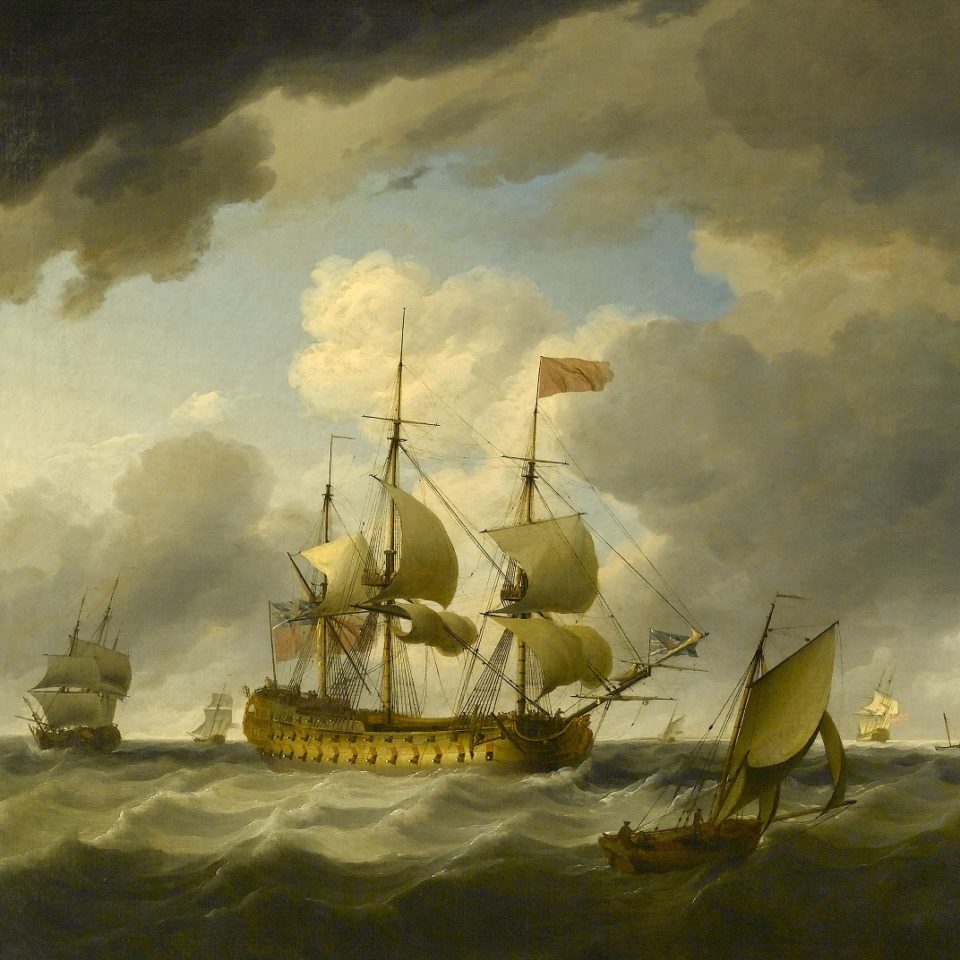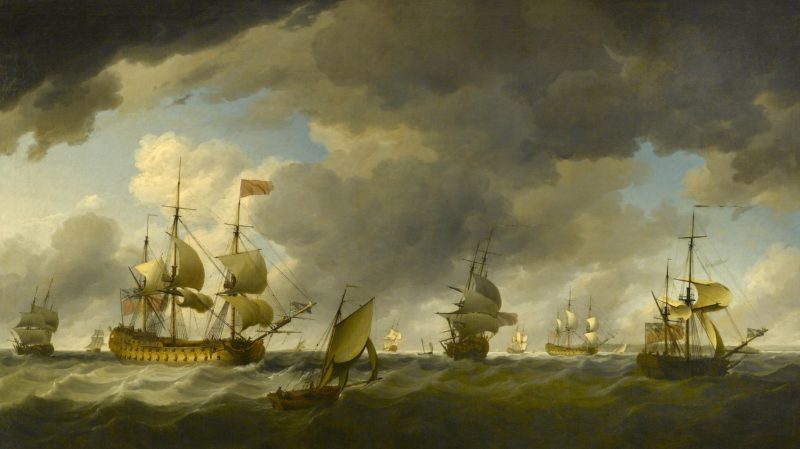Naval Power
Brooking painted this enormous canvas – over three metres wide – in just 18 days. He worked in a room in the Foundling Hospital because his own garret studio was too small. Taylor White, Treasurer of the Hospital at the time, commissioned it. According to John Brownlow’s ‘Memoranda or Chronicles of the Foundling Hospital’, White had seen one of Brooking’s works in a shop. The painting, Brooking’s largest, was intended to be a companion piece to the Hospital’s seascape by Peter Monamy, An English Fleet in the Downs, which has been missing since the beginning of the twentieth century. The artist painted three versions of this subject, and the other two are in the collections at Royal Museums Greenwich and the Tate.
Much of Britain’s growth and prosperity in the eighteenth century was founded on the labour of enslaved people in Britain’s empire, enabled through maritime and naval power. The commission and display of this painting reflected the Hospital’s origins as a patriotic project, with Thomas Coram appealing to the nation’s need for soldiers, sailors and workers, as well as to human compassion towards disadvantaged children.
In 2016, A Flagship Before the Wind was loaned to the Yale Center for British Art in New Haven, Connecticut for its exhibition ‘Spreading Canvas: Eighteenth century British Marine Painting’. The painting is so large the canvas needed to be removed from the frame, and the frame split into two pieces, in order to depart the Museum’s Picture Gallery.
About the artist
Brooking was elected as a Governor of the Hospital in June 1754 after donating the painting, by which time it was on display. He was unfortunately not able to capitalise on the work’s success, and died in poverty a few years later, at the age of 36. He was buried in the cemetery of St Martin-in-the-Fields, where Trafalgar Square and the National Portrait Gallery now stand.

